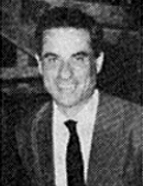

From here , he moves on, with the certainty that critical support provides, to Portugal and the origins of modern thought, the prehistory of which he never fails to scrutinise. Not just any history, but a ‘deep, underground, unconscious, anonymous history of thought, this true social history of thought, this history in which the characters are the concepts ( … )’ ( À la recherche … [In research of], , p. 663). Where the mathematisation of reality and experience feature prominently. It is the change in language, but it is also a change in mental tools. The enormous influence of Lucien Febvre must not be forgotten. He then returns to his well -known essay on the introduction and spread of Arabic numerals in Portugal – h ow he goes in search of the prehistory of scientific experience and experimentation. Only after more than 700 pages does he allow himself to conclude with Esmeraldo de situ orbis and Duarte Pacheco Pereira. A work that sums up a man who JBC also proposes should be considered a ‘synthesis man’. A man of action, a military man, a brave fighter, a navigator, a discoverer , but also a writer and a man of science. This brings us to the Portuguese Renaissance and its specific precursor to the age of Galileo and Descartes.
JBC did not restrict himself to the direct study of Esmeraldo , as we can see. With erudite confidence, he endeavoured to find the sources and the construction process that Duarte Pacheco Pereira used. For this , he had the philological knowledge that he had acquired from masters such as Léon Bourdon, Guy Beaujouan, Robert Ricard and Israel-Salvator Révah – not coincidentally a graduate in History and Philology from the École Pratique des Hautes Études (1970). This resulted in yet another paradigmatically presented publication of the Spanish translation of Pomponius Mela ’ s De situ orbis , with the marginal notes that Duarte Pacheco added to it. Because he was not a Latinist, he read and got the information he needed in Vulgar . In addition to the title that derives from this manuscript, we must consider that it is the most widely used source ( La traduction espagnole [The Spanish translation] , 1974, p. 23). It identifies the translator from Latin into Spanish as Master João Farás, a physicist, bachelor of arts and medicine, who took part in Pedro Álvares Cabral ’ s expedition and who wrote a famous letter to D. Manuel from the newly found land of Vera Cruz.
This work is financed by national funds through FCT - Foundation for Science and Technology, I.P, in the scope of the projects UIDB/04311/2020 and UIDP/04311/2020.
